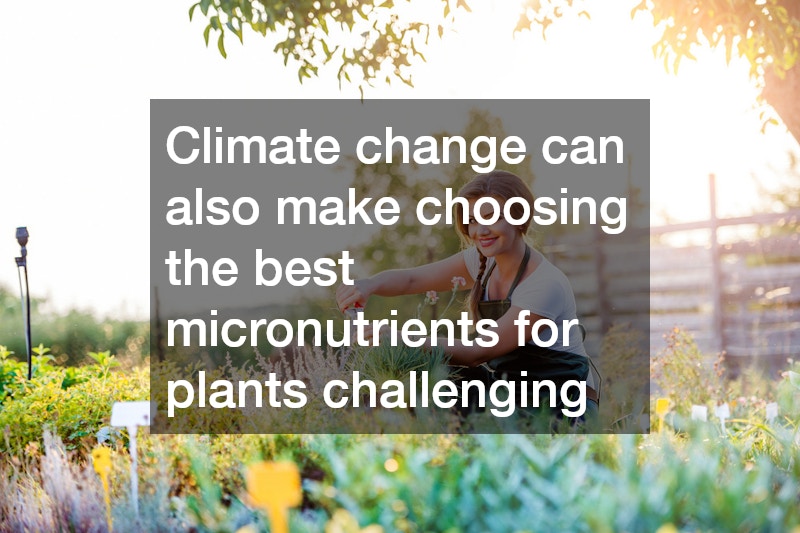
As every gardener discovers, growing a fertile garden takes more than good dirt and proper planting depth. It takes great fertilizers, and the right one for your garden might vary depending on the season and climatic and weather conditions. The best fertilizer for summer for your plants may not work well in winter or during an especially wet or dry weather event.
Climate change can also make choosing the best micronutrients for plants challenging. While your plants’ growth phase requires root fertilizers, as they age, they may need a different nutrient mix, just as they would during a drought. Keep this in mind before you stock up on fertilizer bags of a particular mixture.
Use a better method by purchasing the components of a great fertilizer and creating a custom mix after testing the soil. Test your soil during weather events, such as droughts, so you know when to create a new fertilizer mix. Buy bone meal, seaweed, kelp, chicken manure, phosphate, lime, and alfalfa meal at minimum. Consult the Gardening Channel or a similar resource for specific recipes depending on the nutrients your soil needs.
One of the challenges of modern agriculture is keeping enormous amounts of crops growing. Plants take the nutrients they need from the soil in which they grow, and after many crops have been grown in it, the nutrient levels in soil begin to drop. Rotating fields is one way of allowing a piece of ground to rest and regain nutrition, but this must be combined with other methods in order to keep the world fed and farmers out of economic straits. Root enhancer, 4 1 2 fertilizer, and other types of food for rooting plants are one of the most important factors in producing reliably healthy plants.
What Plants Need
Plants need six key nutrients. Three of these are easily taken from any soil and from water: carbon, hydrogen, and oxygen. There are three others, however––phosphorus, nitrogen, and potassium–that are more difficult for a plant to acquire without some kind of fertilizer. Without human help, plants rely on the natural death and decay of other plants or animals or animal dung to get these nutrients. When humans tend crops, they are able to provide the necessary nutrients through the application of fertilizers.
How Do Fertilizers Work?
There are two ways that a fertilizer or something like a root enhancer can work. First, some fertilizers provide essential nutrition for the plant. Second, some fertilizers and deep root fertilization methods actually enhance the soil by changing water retention and aeration so things are more inviting for the plant. To absorb phosphorus effectively, for example, most plants will need a very specific pH in their soil.
How Well Do Fertilizers Work?
It can be difficult to come up with exact numbers, but the most conservative estimates are that between 30% and 50% of all crop yields are dependent on a commercial fertilizer, whether synthetic or natural. It is also believed that somewhere between 30% and 70% of the fertilizer applied to any crop is actually retained, while the rest is lost to runoff, erosion, leaching, or other issues. Fertilizers and root enhancer, in general, are so crucial to crops that industrial fertilizer is an industry worth around $200 billion.
What Types of Fertilizer Are There?
Some types of fertilizer are applied to the soil and some to the plants themselves. Some are organic and some synthetic. Some are a type of root enhancer, while others are applied above ground. IBA fertilizer, or indole butyric acid, is often combined with vitamin B1 and applied as a root enhancer. The combination of IBA and vitamin B encourages the roots to develop and grow, resulting in about 30% more growth in most plants, and even more grown in hardwood trees. At the same time, it protects young plants and reduces the mortality rate of seedlings by as much as 60%.
Fertilizers and root starter are essential to modern agriculture, and helpful even for the home gardener as well. Without a way to stimulate growth, enhance soil, and protect plants, our world would be a far less fruitful place.


